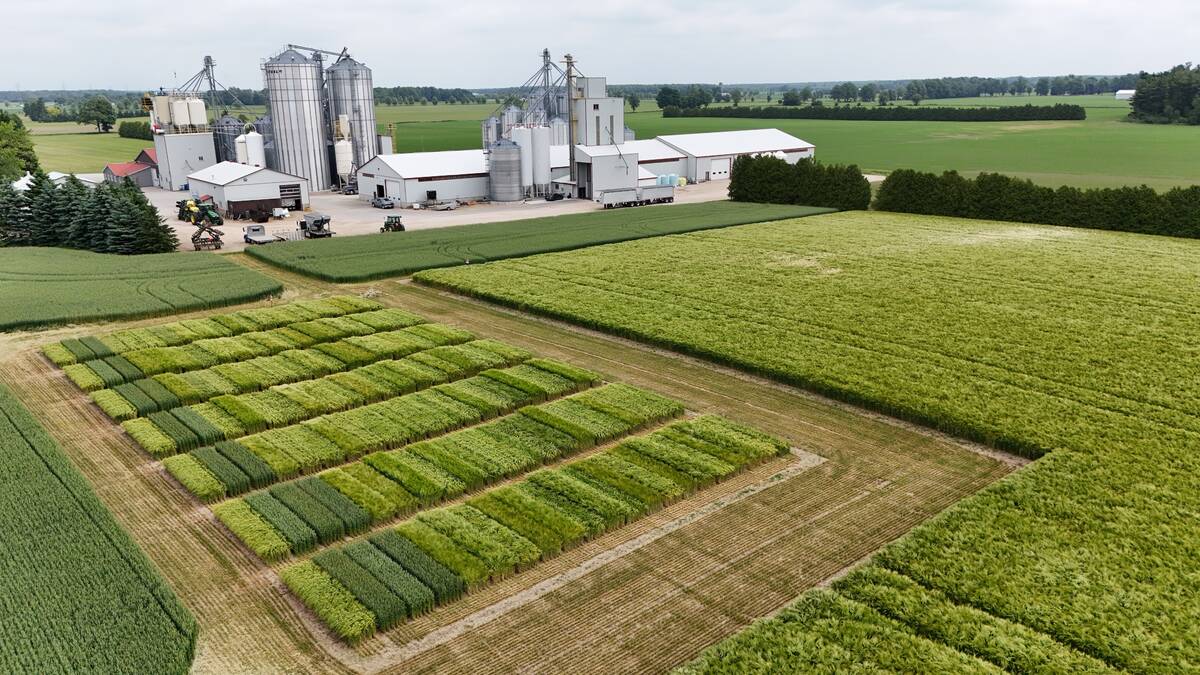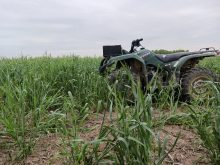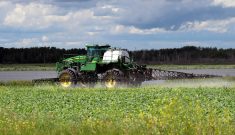Using the same terminology employed by agrochemical manufacturers promoting the “stacking” of herbicide-resistant traits in seed, an organic-sector specialist from the University of Maine sees promise in multiple modes of mechanical weed control.
Eric Gallandt spoke on integrated weed management at the Guelph Organic Conference. He is one of the co-originators, along with Iowa State agronomist Matt Liebman, of the “many little hammers” analogy for organic weed control. The duo proposed that it takes “many little hammers” to effectively tackle weeds without chemicals.
Why it matters: Weed control is one of the most common concerns when farmers consider a switch to organic production.
Read Also

Winter cereals beyond wheat gaining traction
Winter cereals such other than wheat, such as barley, could provide better yield and rotation options for Ontario growers.
Gallandt said integrated management must go beyond tillage to include crop rotation, cover crops, seedbed preparation and managing “seed rain,” which refers to the spread of weed seeds.
Mechanical controls have always been important in a multi-faceted strategy, he said. In his career, technological advancements in mechanics and guidance systems have significantly enhanced the effectiveness of within-row tillage.
Now, thanks to recent research, it’s evident that stacking different types of tillage passes through standing row crops can achieve exceptional weed control.
Gallandt said even if the choice is between the status quo and investing in one new tillage implement, buying new might be the best. He showed a photo of a tractor-drawn, Danish-made row cultivator that’s guided by a rider and designed for small-plot vegetable growers.
“Either having a human guidance system or a camera guidance system (on equipment designed for larger-scale plots) gets you closer to the row without damaging the crop,” he said.
New versions of finger weeders are highly adjustable and can be made more effective than early prototypes.
But if considering more than one in-row tillage implement, recent research could aid the decision. Gallandt said that research was so successful that in one case, the stacking of three tillage types achieved weed control on par with chemical herbicides. The combined total was better than what was predicted to happen by adding three theoretical efficacy rates for each separate implement.
The research hinted that “one tool can predispose another tool to work better,” said Gallandt. “This is the first evidence of synergy with this.”
He said more work is needed on this topic before determining whether it would work in all scenarios. But in this study, three modes of in-row tillage – finger weeders, tine weeders and torsion weeders – were used in various orders of operation.
The stacking experiment showed that a sequence of torsion cultivation followed by finger weeding followed by tine weeding had a weed-eliminating efficacy close to that of herbicides.
However, there was increased crop loss due to the three-mode mechanical control compared to herbicide or just using one of the mechanical controls. A higher seeding rate is recommended if using the three-mode method.
The reasons for exploring beyond mechanical weed control haven’t changed. A recent University of Maine study using five-acre plots of silage corn overseeded with condiment mustard and using an old IH cultivator with sweeps for between-row cultivating, showed the mean weed-control efficacy was 67 per cent for the cultivator versus an expected efficacy of 95 per cent for Roundup.
To counteract this added risk of weed survival, a typical organic farmer cultivates again to get the remaining 33 per cent, and again if weather and time permit.
But if only 67 per cent of remaining weeds are killed each time, that still leaves many weeds that can all produce seeds and create the next year’s weed problem.
Gallandt’s approach since the 1990s has been building a “multi-stress strategy” to target weeds. It starts with having fewer weeds at planting time, progresses through encouraging weed germination at times when they can be controlled, and ends with limiting the deposit of weed seeds (“seed rain,” he calls it) if weeds get past the flowering stage.
“It’s not that we ignore (killing the weed) but we do de-emphasize that,” and think more about the ecology of the field.
At seeding time, the crop must be given the chance to establish size over the weeds. A low seed count or low establishment allow weeds to win.
“Crop competition is foundational to everything I’m talking about.”
With mechanical control, target small weeds. In lamb’s-quarters and pigweed, there are already substantial root masses at the cotyledon stage that can easily be pulled by a cultivator or a tine harrow after planting. Mustard is harder to deal with because it has a much smaller root mass at this stage.
Managing the seed bank should be a goal. If there is a low seed bank, there are more crop choice options. That said, Gallandt said he has seen many successful farmers with a large seed bank.
Studies show that although weed seeds can survive for years, the number is low. Under regular soil conditions, only a few seeds from most annual weeds of concern survive beyond a year.
Those that can survive longer, such as wild radish, make it harder for anyone growing commodity crops on a short rotation. But vegetable growers in particular often have options of growing short-lived crops in their rotation so they can terminate weeds before they go to seed. They also have options for cover crops when appropriate for weed suppression.
The goal is to create “a lot of variety of disturbance events over time,” Gallandt says.
Organic farmers can take comfort in knowing they’re not managing for the few seeds in the seed bank that will last for decades. Their strategy should instead aim to eliminate the largest proportion of the weed seeds.
That being said, eliminating all weeds is effective, if possible. This was shown through recent research in which every weed was hand-pulled before going to seed in some side-by-side melon plots. The next year’s plot was almost weed-free.
Tarping, used increasingly in small-scale vegetable plots, can achieve this level of weed control.
Gallandt also advised not to worry about re-introducing weed seeds through partially composted manure. These seeds account for a small percentage of the total. A much greater proportion is already present and the nutrient benefits of partially composted manure outweigh the risks.
With manure brought in from off-farm, however, be aware that new weed species can be introduced to the land.















